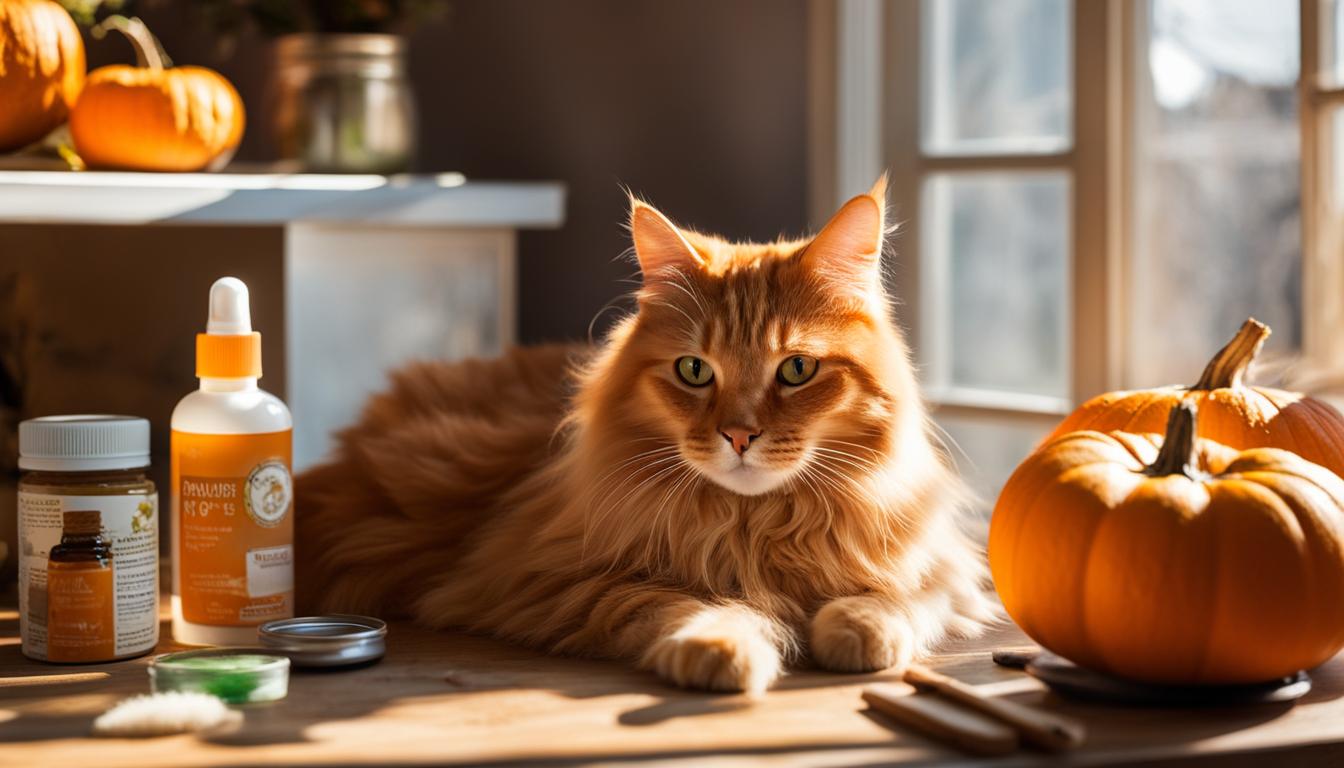Hairballs in cats are a common issue that many cat owners have to deal with. While occasional hairballs are usually not a cause for concern, frequent hairballs or accompanying symptoms may require veterinary attention. The good news is that there are steps you can take to prevent hairballs and keep your feline friend healthy and comfortable.
Cats ingest fur while grooming themselves, but it should pass through their digestive tract without causing any issues. However, when excessive fur accumulates, it can form hairballs. Ingestion of more fur than normal can happen due to various reasons, including diseases and issues affecting the GI tract. Recognizing the signs of hairballs, such as retching and vomiting, is important.
To prevent hairballs in cats, regular grooming and cat care are essential. By following a few simple tips, you can minimize the occurrence of hairballs and help your cat lead a happier, healthier life.
Key Takeaways:
- Regular grooming through brushing helps remove loose hairs and prevent excessive fur ingestion.
- Using specially formulated cat food for hairball control can reduce the frequency of hairballs.
- Add fiber to your cat’s diet through treats or supplements to aid in natural passage of swallowed hair.
- Discourage excessive grooming by engaging your cat in other activities and provide hairball control products.
- Monitor your cat’s hairball frequency and accompanying symptoms for any underlying health issues.
How to Prevent Hairballs in Cats
Regular brushing is an effective way to minimize hairballs in cats. By removing loose hair, dander, and dirt, grooming sessions can prevent excessive fur from being ingested by cats during their self-grooming routine. Brushing should be done daily, especially for long-haired cats.

Additionally, using cat food formulated for hairball control can help reduce the frequency of hairballs. These specially formulated foods typically contain increased fiber, oil, minerals, and vitamins to promote the natural passage of swallowed hair through the digestive system. Adding fiber to a cat’s diet through treats, nutritional supplements, or switching to a hairball control food can also aid in preventing hairballs.
Discouraging excessive grooming by engaging cats in other activities and using hairball control products, such as hairball treats or laxatives, can further reduce the occurrence of hairballs.
Conclusion
While it is not possible to completely prevent hairballs in cats, implementing preventive measures can significantly reduce their occurrence. Regular brushing is an effective way to minimize hairballs in cats as it helps remove loose hair and prevents excessive fur from being ingested during grooming. Using hairball control products and cat food formulated for hairball prevention can also aid in reducing hairball frequency.
In addition, adding fiber to a cat’s diet through treats, supplements, or specialized hairball control food can promote the natural passage of swallowed hair through the digestive system. It is crucial for cat owners to monitor their furry companions for any changes in hairball frequency or accompanying symptoms, as persistent or frequent hairballs may indicate an underlying health issue that requires veterinary attention.
By following these tips and incorporating them into a cat’s routine, owners can help keep their feline friends healthy and comfortable by effectively managing and preventing hairballs.
FAQ
Can hairballs be prevented in cats?
Yes, hairballs can be prevented in cats with proper care and grooming.
What are some hairball prevention tips for cats?
To prevent hairballs in cats, regular brushing, using hairball control products and food, adding fiber to the diet, and preventing excessive grooming are effective strategies.
How can brushing help prevent hairballs in cats?
Brushing removes loose hair, dander, and dirt, preventing excessive fur from being ingested during cats’ self-grooming routine.
Are there hairball control products available for cats?
Yes, there are hairball control gels, vet-approved natural remedies, hairball treats, and hairball control food specifically designed to reduce hairball formation in cats.
How does adding fiber to a cat’s diet help prevent hairballs?
Adding fiber to a cat’s diet through treats, nutritional supplements, or switching to a hairball control food promotes the natural passage of swallowed hair through the digestive system, reducing hairball formation.
Can excessive grooming contribute to hairball formation?
Yes, excessive grooming can lead to increased hair ingestion and contribute to hairball formation in cats.
When should I seek veterinary attention for hairballs in my cat?
If your cat experiences frequent or persistent hairballs or shows accompanying symptoms, it is recommended to seek veterinary attention as it may indicate an underlying health issue.

